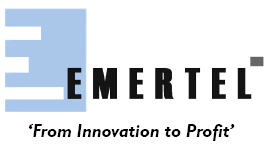Turning Innovation into Profit
February 15, 2010 2 Comments
Welcome. It’s 2010, a new year, and now for a new venture. Over the last decade, I have worked for some familiar names in technology (Nokia, Accenture, Telstra) and have been actively engaged in the IEEE and other industry forums, like the TMForum. There have been plenty of highlights (some of which I’ve personally been involved in) which have had a positive impact on education, health and entertainment.
- The rollout of high speed wireless networks supported by intelligent service and network management systems – in both the emerging and developed world
- Scale-up and scale-out computing and the enterprise adoption of virtualisation
- App-stores from Apple, Microsoft and others
- Search engines like Bing and Google and categorisation engines like Kosmix
- Content delivery networks like Akamai
- Some pretty funky devices – from the iPhone to Microsoft Surface.
The dark side: I’ve heard the promises (WAP), empty threats (Y2K) and the hype (SOA) from vendor pitches, the media and overly exuberant or skeptical analyst reports. In that time, it wasn’t just the dot coms that lost billions of hard-won funding dollars. Established organisations the world over scattered megabucks like spray on ultimately useless initiatives. It’s well chronicled in ‘Billion Dollar Lessons’ by Chunka Mui and Paul Caroll.

Billion Dollar Lessons
According to the Standish Group and the distinguished MIT/Harvard researcher Peter Keen , two-thirds of technology investments, accounting for greater than 50% of a firm’s budgets failed to deliver benefits exceeding their costs! Read that again. That’s a big problem. Where the hype and reality of emerging technologies are difficult to distinguish, this problem is, I believe, particularly acute. It irks me, because these projects give technology a bad name, when really what’s important is how we design and wield the technology to serve us. Humans can really make their lives difficult. (why else would we have consumer warning labels not to use hair dryers in the shower…?) Technologies, per se, are neutral. But they must be designed for the user and her context. In my daily work at the Telstra Chief Technology Office, I guide company strategies for dealing with emerging technologies internally and how they can lead to better products that we can take to market. The good ideas accurately capture the zeitgeist of the user and her context and have a compelling economic logic to boot. They make sense from a business, user and technical perspective, given the trajectory of the industry and market. Idea generation, conversion and diffusion.
Of course, good ideas are rare. And it’s even rarer, generally speaking, for a good idea to be recognised and funded. Rarer still, for it to get diffused in the organisation. For a great analysis of this, read the many articles by Govindarajan and Trimble in the Harvard Business Review. Their examples include firms like P&G, Cisco and others.
Emertel So in 2010, I decided to create a communications vehicle called Emertel. The name Emertel is a play on words – to indicate the focus on emerging technologies. The other reference is to Greek mythology and to the character of Nemertes (literally, the “unerring” and “ever-truthful”), a sea-nymph who rendered navigational assistance to sailors on perilous journeys. Likewise, Emertel aims to guide those navigating the complex and shifting currents of technology towards value and success by communicating otherwise complex emerging technology concepts in visual ways, and with story-telling. Emertel’s vision is to guide executive level technology decisions towards value.
Emertel will be vendor-independent, naturally, highlight key trends, and dispense trusted advice. The technology frontier is constantly shifting outward and companies will be overtaken by competitors or will not survive if they opt for the ‘do nothing’ option. Think of Skype and the international calling divisions of most telcos. On the other hand, spending big with a flawed approach leads to failure, too. “If you automate a flawed process, you’re just doing stupid things faster,” as a colleague once remarked.
I like to view these things from a strategic and operational effectiveness standpoint. Operational efficiency drives companies to do existing activities better, strategy is about choosing which activities to do, which to do different, and which not to do at all. I think it’s the difference between leadership and management. Warren Bennis has some great reads on the topic. From a strategic standpoint, emerging technologies allow a reconfiguration of internal and go-to-market activities for strategic gain. From the perspective of operational efficiency, emerging technologies can lead to incremental innovations that decrease manual effort or speed up a process. For it’s not just about disruptive technologies. It’s about ideas of how to combine established technologies, too. Apple’s products aren’t technologically leading, but they are so easy to use. It’s a design philosophy that has changed how we listen to music, browse the mobile internet and make calls.
In short, it’s about understanding that innovation and emerging technologies do not exist in a vaccuum. They have to serve a desirable objective, and that, in turn, requires getting and keeping skilled people, designing systems and structures to motivate appropriate action, a culture of experimentation and ‘fast fail’ (a la Google), and above all, great leadership. I hope that this blog helps you to deal with the future today, to turn innovation into profit, and I’d value your comments and thoughts.

Hi, this is a comment.
To delete a comment, just log in, and view the posts’ comments, there you will have the option to edit or delete them.
Pingback: 10 Reasons Why IT Projects Fail « Deal with the future today